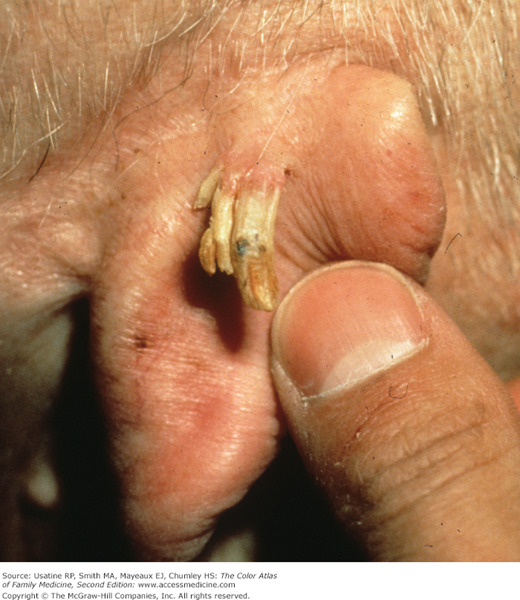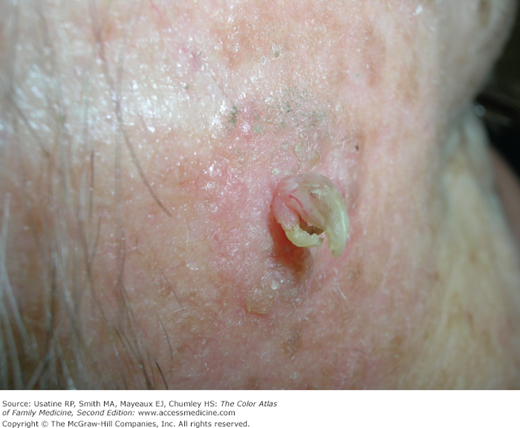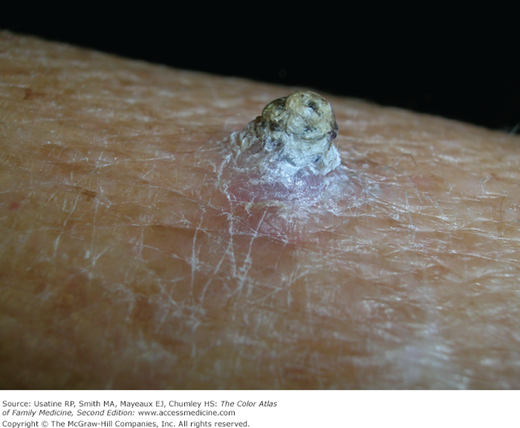Patient Story
A 74-year-old man asks about a lesion on the back of his right ear (Figure 169-1). It has been present for approximately 5 years. Although the lesion does not bother him, his wife is concerned because it has been slowly growing. Shave biopsy revealed that the horn was from a basal cell carcinoma. The patient was referred for Mohs surgery to excise the remainder of the cancer.
Introduction
Epidemiology
- Relatively rare lesion, most often occurring on sun-exposed areas of the skin in elderly men; a recent Brazilian case series, however, found a higher prevalence in women.1
Etiology and Pathophysiology
- Results from unusual cohesiveness of keratinized material from the superficial layers of the skin or deeply embedded in the cutis. Etiology is unknown but may be related to skin damage from sun exposure or trauma; infectious causes have also been reported including molluscum contagiosum and leishmaniasis.2
- Consists of marked retention of stratum corneum.
- May be benign, premalignant, or malignant (Figures 169-1, 169-2, and 169-3) at the base; in 2 large series, 58.6% and 38.9% had malignant or premalignant base pathology.1,3
- A history of other malignant or premalignant lesions, tenderness at the base, large size, older age, and location on the penis increase the risk of underlying malignancy.2–4
- Associated with many types of skin lesions (at the base) that can retain keratin and produce horns including actinic keratosis, warts (Figures 169-4 and 169-5), seborrheic keratosis (Figures 169-6 and 169-7), keratoacanthoma (Figure 169-3), sebaceous gland, and basal or squamous cell carcinoma (Figures 169-1, 169-2, and 169-3). In the more recent case series, actinic keratosis was found in 83.8% of the premalignant cases and squamous cell carcinoma was found in 93.75% of the malignant cases.1
- Rare cases have been described in association with metastatic renal cell carcinoma, lymphoma, dermatofibroma, pyogenic granuloma (Figure 169-8), and, recently, Kaposi sarcoma.5






